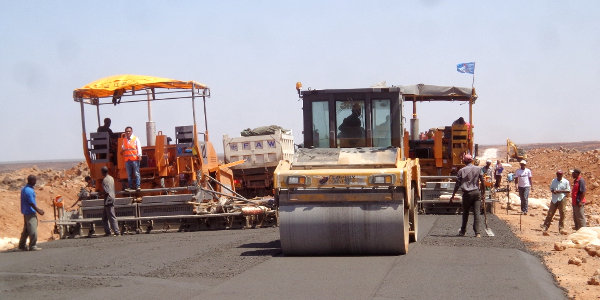
COMMENT: By Moono Mupotola
Experts confirm potential of the Programme for Infrastructure Development in African (PIDA) to contribute jobs and GDP growth
When the Lamu Port, South Sudan, Ethiopia Transport Corridor Project (LAPSSET) won the prestigious Global Infrastructure Leadership Forum Award in Washington DC on March 10, 2016, the project was up against equally critical multi-billion dollar programmes including Mexico City New International airport and Seine-Nord Europe Canal, connecting northern European countries such as Belgium, Germany and the Netherlands.
LAPSSET’s award in the job creation category honours leaders “driving the next generation’s most transformative global infrastructure projects.” Since inception in 2012, LAPSSET has created an estimated 5,000 direct jobs for the 500- kilometre road between Isiolo in Kenya and Moyale, a market town on the border of Ethiopia and Kenya. Opportunities in engineering designs around the Port of Lamu, banking, telecommunications, and energy generation are still available.
LAPSSET, a flagship project of the Programme for Infrastructure Development in African (PIDA) and highlighted at the 2016 PIDA week has set the path. Once completed the project is anticipated to inject 2 to 3% in Kenya’s GDP but also position the country as an economic hub in East Africa. We are convinced that the 51 priority projects identified under PIDA in the areas of energy, transport, ICT and trans-boundary water will follow suit.
Creating productive jobs remains a key challenge in sub-Saharan Africa where nine out of ten workers in both rural and urban areas are estimated to hold only informal jobs (ILO, 2009). By 2050, Africa’s population is predicted to double to at least 2.4 billion leading to increased demand for energy. To meet this demand by 2040, US$43 billion dollars of annual capital investment is required.
The good news is that the process of lighting up Africa; one of the AfDB’s High 5s, offers great prospects for employment and skill transfer in Africa. The continent will need a cross-section of skilled workers such as plant design and site engineers, maintenance workers and semi-and low- skilled technicians for infrastructure construction. The answer is not to only build skills but to ensure transfer of skills. This will improve our manufacturing productive capacity and thereby accelerate Africa’s industrialisation.
PIDA 2016 was also an opportunity to learn from other developing countries. When India invested in solar energy it did so by ensuring that solar panels and related components where manufactured in the country. India is already reaping the benefits of the huge job creation potential offered by the solar project value chain. According to the Natural Resources Defence Council (NRDC), solar and wind renewable energy projects have created some 79,000 full time jobs as of November 2015. A 2015 report by India’s Council of Energy, Environment and Water (CEEW) shows that as many as 1 million jobs could be created if India achieves its target of 100GW solar energy programme by 2022.
 The Independent Uganda: You get the Truth we Pay the Price
The Independent Uganda: You get the Truth we Pay the Price


